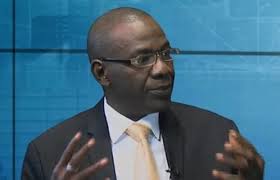The Association of Bureau De Change Operators in Nigeria (ABCON) for the second time within 48 hours on Friday flawed the Central Bank of Nigeria’s (CBN’s) guidelines on Bureau De Change (BDC) licensing, saying the new requirements are not in tandem with global best standards.
The National President of the association, Alhaji Aminu Gwadabe, who expressed the position of the BDC operators, maintained that the increase in capital requirements for BDCs from N35 million to N2 billion for Tier-1 BDCs was against international best practices.
Speaking during a panel session at an economic forum organized by the Vanguard newspapers in Lagos, Gwadabe criticized the negative impression being created about BDC operators in the country, especially as regards linking them to terrorism funding and continued depreciation of the Naira in the foreign exchange market.
According to him, the sustained depreciation in the exchange value of the local currency is due to low FX earnings by the country as well as corruption, and not necessarily due to increasing demand for the USD and other foreign currencies.
The ABCON President said: “The Bureau De Change sector has seen serious policy inhibitions, In 2014, just an exchange not a deposit bank, they increased the capital from N19 million to N35 million and now we are doing the same thing. Even microfinance that is a bank, their capital base is N200 million and now we raising the capital base of BDCs from N35 million to N500 million. That is for Tier-2. Yier-1 is N2 billion. It is highly against global standards.
“Even in the U.K, the capital requirement for BDCs is 50,000 pounds. That is like N100 million. In Uganda, capitalization of BDCs is 13,000 pounds. In India, it is $67,000. So it is, good regulators look at standards”, Gwadabe added.
Based on his points, he called on the CBN to review the N2 billion capital benchmark for Tier-1 BDC to align with international standards, assuring that BDC operators are ready to collaborate with the apex bank in areas of its monetary policies to achieve the intended micro and macroeconomic objectives.






